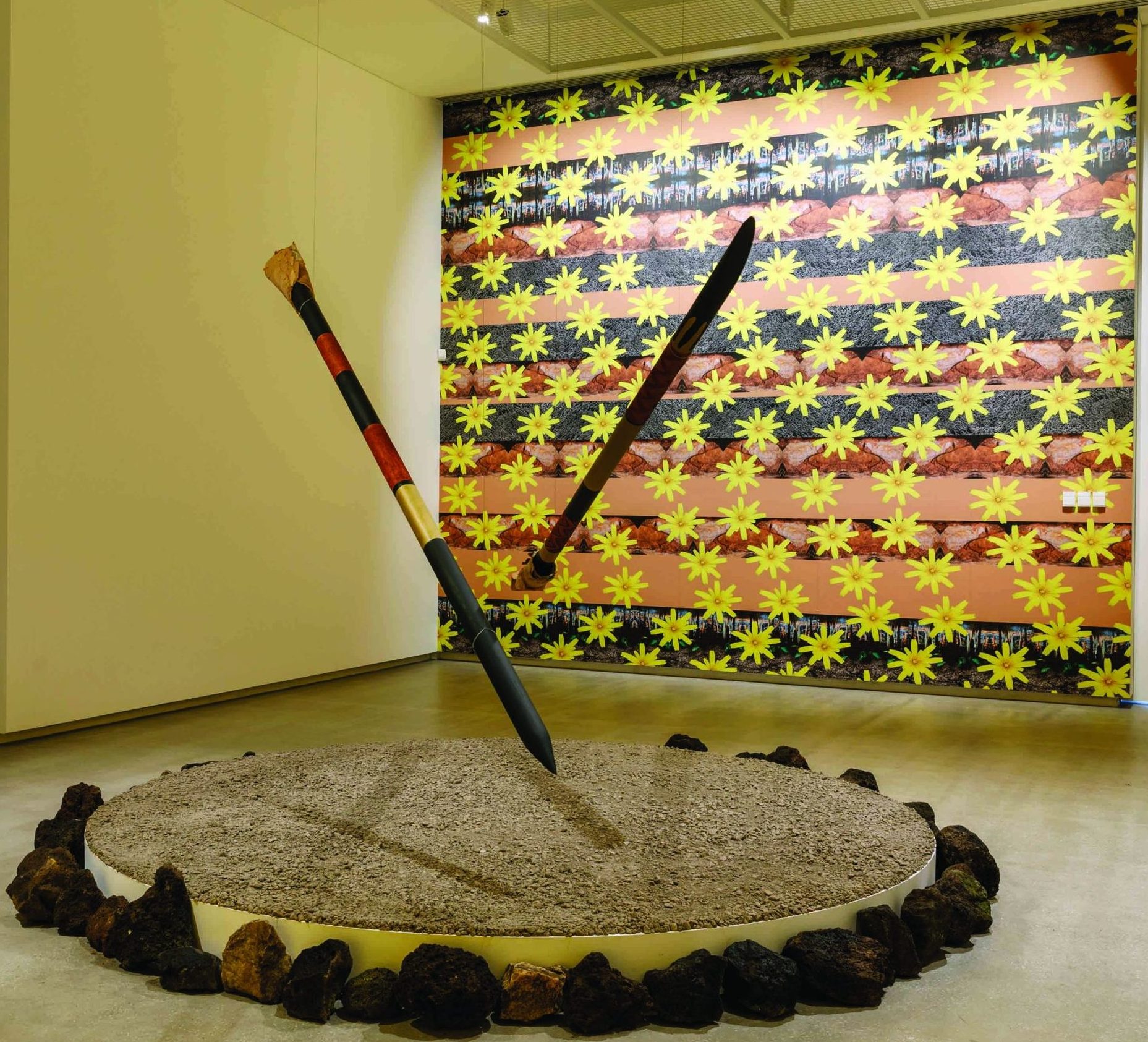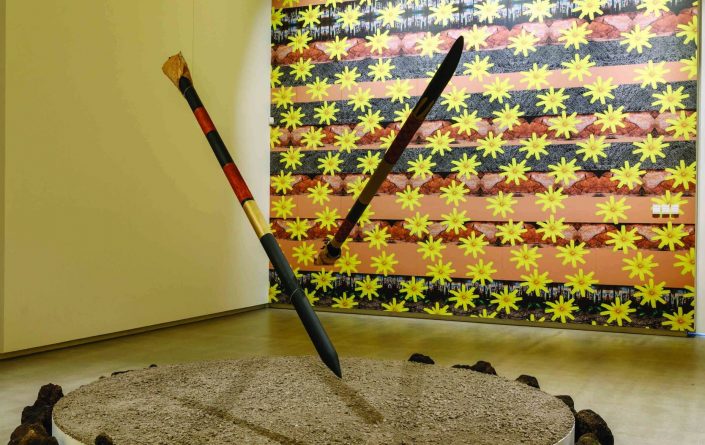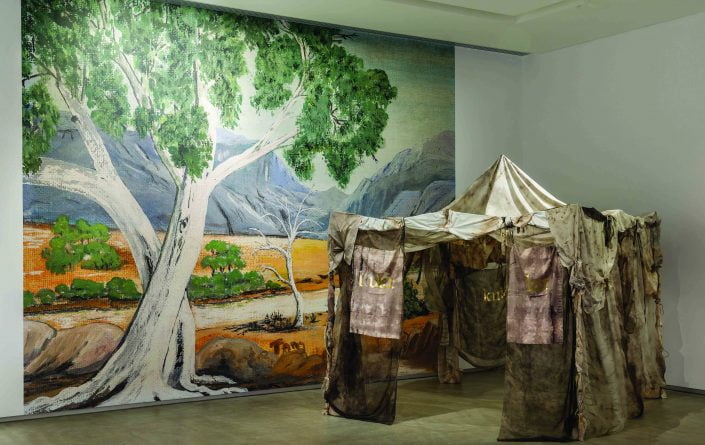Arika Waulu
Koolyn, Gunnai, Djap Wurrung, Peek Wurrung, Dhauwurd Wurrung
Born 1985, Narrm/Melbourne
Lives and works in Narrm/Melbourne
Arika Waulu’s body of work (in WILAM BIIK) upholds the social practice of the Blak Matriarchal laws, connections with their grandmothers, mothers, aunties and siblings. Expressing contemporary interpretations of design and art, Waulu works predominantly with digital media, photography, object design, community activation and indigenising spaces. Their formations honour the continuation of their Ancestral methods of creating design to honour landscapes and waterways for their sustenance. The backbone of their practice has been the re-establishment of the Kanak/digging stick and the ongoing development of their landback initiative Wuurn of Kanak.
The practice of Matriarchal laws comes through our communities’ connections with families and Country. The continuation of grandmother’s law has been carried on through families that were able to nurture community and Country, withstanding the genocide of our peoples and the ecocide of our Countries and totem kin. There were families who were unable to carry on those Matriarchal laws and connections to family and community. Historically Blakfullas were pushed out of communities through the white australia policy and have continued to be systematically affected in this way through the updated assimilation policies of today and colonial institutions honouring the conquest set out to eradicate Blakfullas living peacefully on their Countries.
– Artist Statement
Koolyn, Gunnai, Djap Wurrung, Peek Wurrung, Dhauwurd Wurrung
Born 1985, Narrm/Melbourne
Lives and works in Narrm/Melbourne
Waulu’s four times great grandmother was the last to live on Ramahyuck mission and refused to leave. She would carry her stick and was known as the swamp woman. She lived out the rest of her days on her Country, an unmoved Matriarchal way which still carries on through her bloodlines today.
Waulu’s inseparable closeness with their paternal and maternal grandmothers and their Countries has provided a continuation of storytelling and deep comprehension of caring for family and community through staunchly intricate Matriarchal ways handed down through generations of Blak grand-mothering. The digging stick known in Gunnai as kallak or kanak in Djapwurrung, varies in length, width and tips, depending on the landscape and personal preference. Usually one end is pointed and the other end has a flattened tip or rounded handle. Although the kallak is seen to be fundamentally a tool of gardening, building and hunting, it has a spiritually tangible purpose of directing, manifesting and travel.
This work was made with love and respect for the shoulders of the giants of whom we stand upon, a work to honour the land and waters of our Countries which are connected through our shared waters, trees, yam plains, totems, blood, and laws.
– Artist Statement
Artworks — Exhibitions
-

Arika Waulu 'Yuccan Noolert (Mother Possum)' and 'Pun’Yin / Murnong (yam daisies)' 2021
Yuccan Noolert (Mother Possum) wood, red ochre, yellow ochre, charcoal, acrylic, ink, melaleuca bark, crushed granite, koolor (lava stone) dimensions variablePun’Yin / Murnong (yam daisies) plant, soil, upcycled wood planter box, koolor (lava stone) dimensions variable
-

Arika Waulu 'Yuccan Noolert (Mother Possum)' and 'Gunnai Matriarchal Tree (Wallpaper)' 2021
Installation view, TarraWarra Museum of Art, dimensions variable. Courtesy the artist. Photographer: Andrew Curtis




